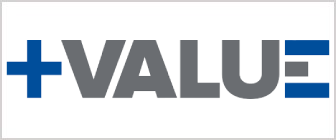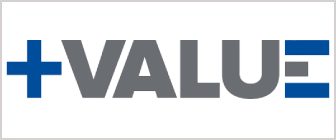By Martín Ramos
Although it may seem unbelievable, proving the accuracy of an operation for tax purposes remains a major problem for taxpayers, and this is due to a Tax Administration that lacks trust in taxpayers, taxpayers who do not give due importance to substantiating their operations, and a jurisprudence that is not very clear on the matter.
Taxpayers have the business objective of ensuring that the operations they carry out generate profits, which in itself is already a major challenge for entrepreneurs. This becomes even more complicated if the profitability margins do not end up being what they estimated for income tax, as the tax authority comes several years later and points out that expenses and/or costs have not been substantiated.
The first thought of taxpayers is surely on the possible abuse by the tax administration, as it is not understood how it can be thought that the company carries out operations and for example sells or provides services, without considering that it has had to incur expenses and costs related to it, without prioritizing the documentation of the operations, since entrepreneurs are undoubtedly focused on increasing profits.
This lack of priority may be part of the problem, as there are many operations that are not properly documented or that over the years, part of the information is lost. This is because taxpayers do not keep a file of evidence for each operation they carry out, as accounting usually only works with certain documents such as: purchase and/or service orders, contracts, invoices, and payment methods. However, communications, such as emails and other means that allow actions within the performance of an operation to be evidenced, are not usually part of the accounting folder. This generally remains in the inboxes, files, and other documentation of the parties involved in the operation.
The latter point is of great importance, as if the tax authority takes several years to audit these operations, there is a high probability that they will be lost or misplaced, as their custodians (employees of the taxpayers) may change. Without clarity on which documents will be sufficient for the auditor, it can be an overwhelming task and undoubtedly of high compliance cost.
From the perspective of the Tax Administration, the issue is also complex. On the one hand, the auditor believes that every taxpayer selected for audit is an evader. While there may be possible risks identified, this is still a hypothesis. The problem is that the auditor seems to only have one approach: to rectify. This is precisely what makes proving the accuracy of an operation difficult, as any difference, distortion, or absence in the documents will be sufficient to disregard the evidential value and therefore rectify the operation.
In a world with a high rate of computerized operations, this seems inconceivable. That is, the Tax Administration may have electronic dispatch guides, electronic invoices, purchase records, sales records, kardex, general and subsidiary ledgers, and still an operation ends up being not reliable because communications between the parties involved cannot be evidenced, or worse, because these communications do not have the same level of detail as the invoices or contracts involved. The auditor cannot assume that companies have only one operation or that one person does everything, as otherwise it is not understood how taxpayers can be expected to have everything in a file available for each operation perfectly assembled.
Undoubtedly, the Tax Administration needs to ensure that taxpayers fulfill their tax obligations correctly, and it is understandable that they wish to scrutinize operations in detail. To achieve this, appropriate samples must be established, and evidence must be properly assessed, depending on the operation being analyzed. The purchase of goods or the acquisition of services is not the same, and it should be noted that the ways of contracting and operating are very diverse. For example, not every purchase goes through the taxpayer's physical warehouse, as it depends on the conditions agreed upon, and a contract should never be interpreted as a straitjacket since what really matters is the operation and that the parties are satisfied, which is undoubtedly easier when they are independent parties.
Proving the provision of services has become increasingly complex, as proving a consulting service is not the same as proving a financial or IT service. However, the problem arises when everything is expected to be substantiated in a similar manner. The Tax Administration is increasingly raising objections for failing to substantiate the accuracy of operations, but it is not really addressing tax evasion or avoidance; what it is doing is pursuing formalities that have become increasingly costly.
Undoubtedly, the Tax Administration has been working on mechanisms to strengthen the fight against tax evasion and avoidance, thus requiring the enhancement of its audit procedures to ensure that formalities are not targeted, especially when the Tax Administration itself has sufficient information to determine the true risks of tax compliance.
From a jurisprudential perspective, it has been noted in recent years that taxpayers must maintain a minimum of documentation or information to demonstrate the authenticity of transactions, and it has urged the Tax Administration to conduct a comprehensive and reasoned assessment of evidence. Perhaps the recent Intendancy of Appeals could begin to rectify objections based on formalities, providing greater certainty on how to meet the minimum standard of documentation or information necessary to prove the authenticity of transactions, and distinguishing between transactions carried out by taxpayers that may be scrutinized due to formalities and those transactions that have indeed been created to avoid paying or paying less taxes.
Given the above, the road ahead is still long. For taxpayers, it is undoubtedly necessary to reinforce the documentary support of transactions with additional validation of sufficient documentation to prove authenticity. For audit departments, it is essential to stop assuming that all taxpayers have fictitious expenses or costs and to better redirect audit efforts. Additionally, it is time to start auditing more recent periods, allowing taxpayers greater opportunity to access information. As for jurisprudence, it is necessary to correct deviations in audit procedures and establish a minimum standard of evidence to prove the authenticity of transactions. Otherwise, we will continue to generate inefficiency and additional costs.


